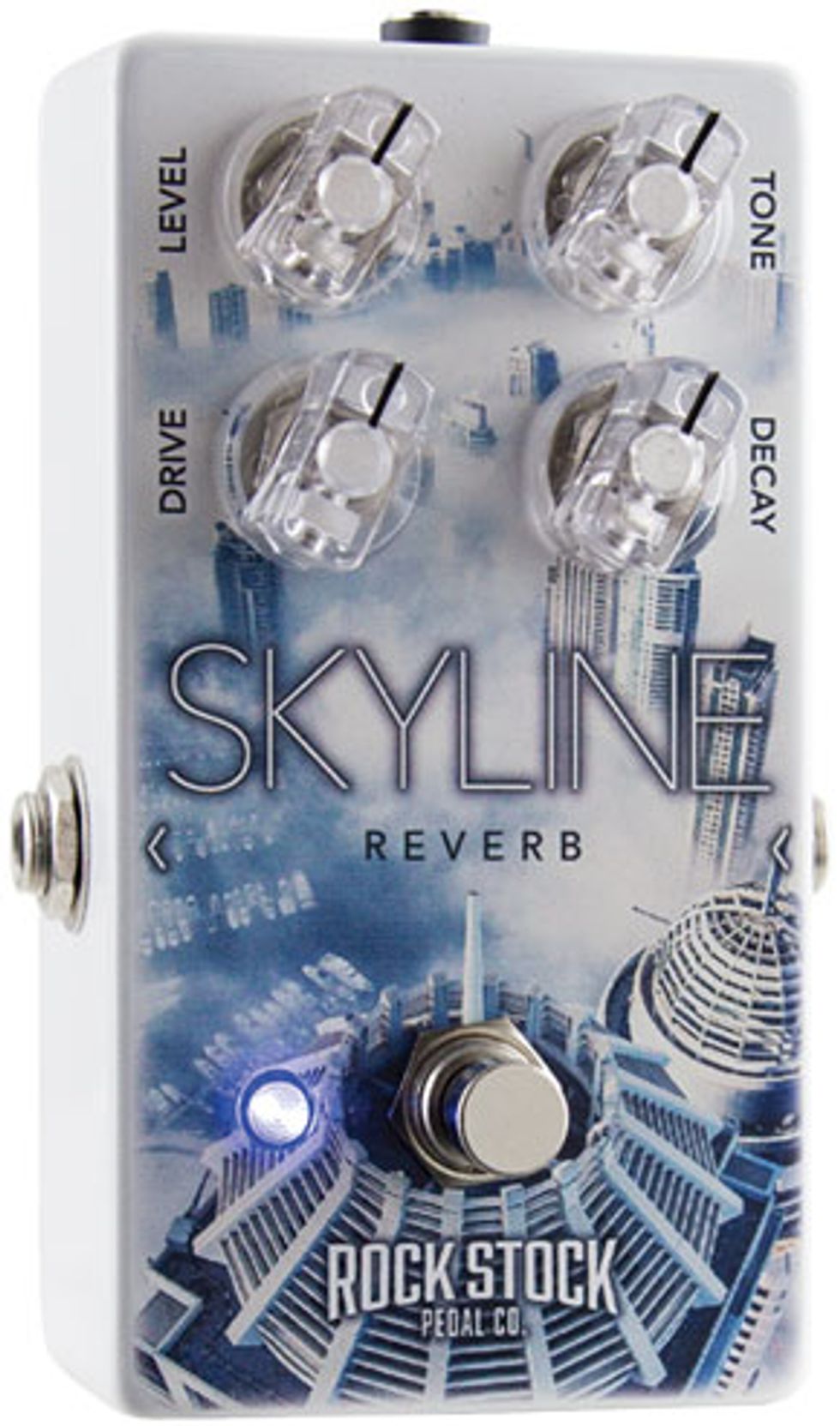
The Rock Stock Skyline Reverb aims to put authentic spring-reverb sounds in a straightforward stompbox, and to that end it succeeds in many measures. As you’d expect, the tone knob shades reverberations from a bit muted to bright and splashy, and decay lengthens them from brief to longer than most real spring units can go. But level and drive might stump players expecting a response like two- and three-knob tube-driven units of yore. Level increases the volume of the wet signal, but no matter how high it’s set, the dry signal doesn’t remain just constant, but dominant. You can’t dial in that drowning sound an old spring unit gets when you crank the mix knob. And the drive control, rather than dialing in tube-like saturation and grit, increases the reverb’s intensity in a way that seems more like an extension of the decay control.
On the plus side, the feel and response of the Skyline’s lovely fundamental tones have a lot of the boing and sproing of a real spring reverb. But a few refinements would help its odds in a competitive market.Test gear: Baritone Jazzmaster with Seymour Duncan Antiquity IIs, Jaguar HC50 with Weber Gray Wolf
Baritone Jazzmaster (both Pickups) - Level - Max, Tone - Min, Drive - Min, Decay - Noon
Ratings
Pros:
Reasonably convincing spring-reverb sounds with extended decay possibilities.
Cons:
Hiss from high level settings present when effect is bypassed. Slight pitch-modulation artifacts. No “drowning” surf sounds.
Street:
$179
Rock Stock Skyline Reverb
rockstockpedals.com
Tones:
Ease of Use:
Build/Design:
Value:











![Rig Rundown: Russian Circles’ Mike Sullivan [2025]](https://www.premierguitar.com/media-library/youtube.jpg?id=62303631&width=1245&height=700&quality=70&coordinates=0%2C0%2C0%2C0)






